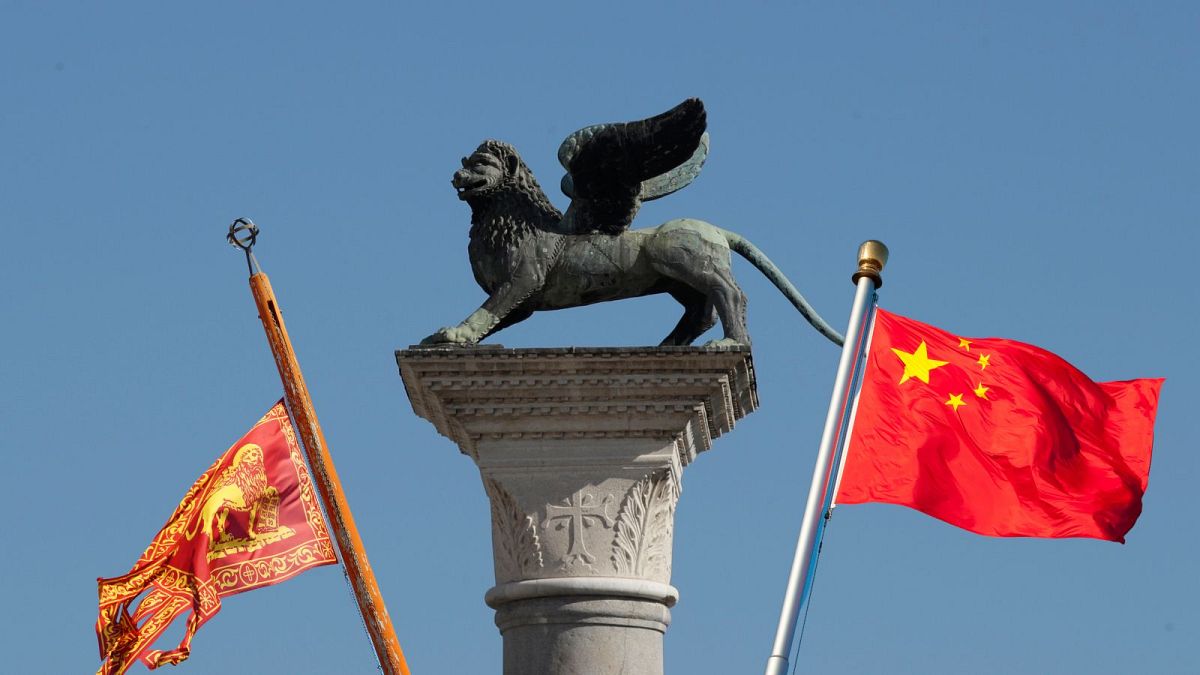New chemical evidence claims that Venice’s winged lion could be Chinese… And that it’s not a lion but an altered Chinese tomb gardian known as a ‘zhènmùshòu’.
What? The Lion of Venice, an ancient bronze statue of a winged lion which can be seen by countless tourists on a massive plinth of Egyptian granite in the Piazza San Marco.
Lions have wings? They do in Venice. In fact, it’s a lion-griffin hybrid that symbolises the city and its patron saint St Mark. It is depicted everywhere with usually wings, a halo and a book below its paw – three elements linked to Saint Mark the Evangelist. It can be found on the Venetian flag, has become the symbol of the Venice Biennale, and gave its form to the Golden Lion prize, which was introduced in 1949 at the Venice International Film Festival.
Age? Thought to have been erected between 1172 and 1177.
Why is it in the news? A new chemical study, conducted by researchers at the University of Padua around the 700th anniversary of Venetian explorer Marco Polo’s death, has revealed that the sculpture originates from copper ore deposits in China. More specifically, lead isotopes reveal that major parts of the statue were made from bronze deposits from the lower Tangzi River. The findings were recently revealed during an International Conference in Venice on “Marco Polo, the Book and Asia: Research Perspectives Twenty Years Later”. Previous research had suggested the statue originated from Eastern Anatolia (present-day Turkey) between roughly the 4th and 3rd centuries B.C.E.
Why it matters? The Lion of Venice is associated with power and courage and considering it’s the symbol for the prestigious Venetian Republic, its origin feels important. It was already known that the statue predated Marco Polo and was transported to Venice in pieces, possibly by Polo’s father and uncle, Nicolò and Maffeo, who were in Beijing at the court of the Great Khan between 1264 and 1266. The new findings highlight the global nature of trade during the Middle Ages, the connectivity of the medieval world, as well as the wide reach of the arts from China’s Tang Dynasty (618 – 907 CE).
So it’s not a lion? The new findings put a different spin on the lion / griffin. It might not be a chimera after all but a zhènmùshòu (“tomb guardian”), a popular Chinese fantasy animal during the Tang Dynasty which protected tombs from demons. According to the study, revealing the hybrid to be a Chinese protector, the creature’s moustache, teeth, ears and horns were probably cut or sanded off to resemble a lion, a more recognizable symbol of Western faith.
Was the statue bought or stolen? Unknown. It is historically documented that Venetians had engaged in extensive pillaging of art from the Byzantine Empire during the Fourth Crusade. For instance, the famed bronze Horses of Saint Mark statues were stolen and installed on the facade of St. Mark’s Basilica, and in the 13th century, bronze was plentiful thanks to crusading. While the mystery persists, new information not only reflects the Italian port city’s rich history, but a global network of trade and plundering – as well as the unscrupulous retooling of culture.
Facts? The statue weighs approximately 3,000 kilograms and that book under its front paws was a later addition. The inscription on the book reads: “Pax tibi Marce, evangelista meus”, which translates as “Peace to you Mark, my evangelist”. According to legend, while Saint Mark was visiting the Venetian lagoon in the 1st century AD, a storm threatened his life. Handily, an angel was on call and appeared to him, reassuring the saint with those words.
Checkout latest world news below links :
World News || Latest News || U.S. News
The post Is Venice’s famed winged lion statue actually Chinese? appeared first on WorldNewsEra.

